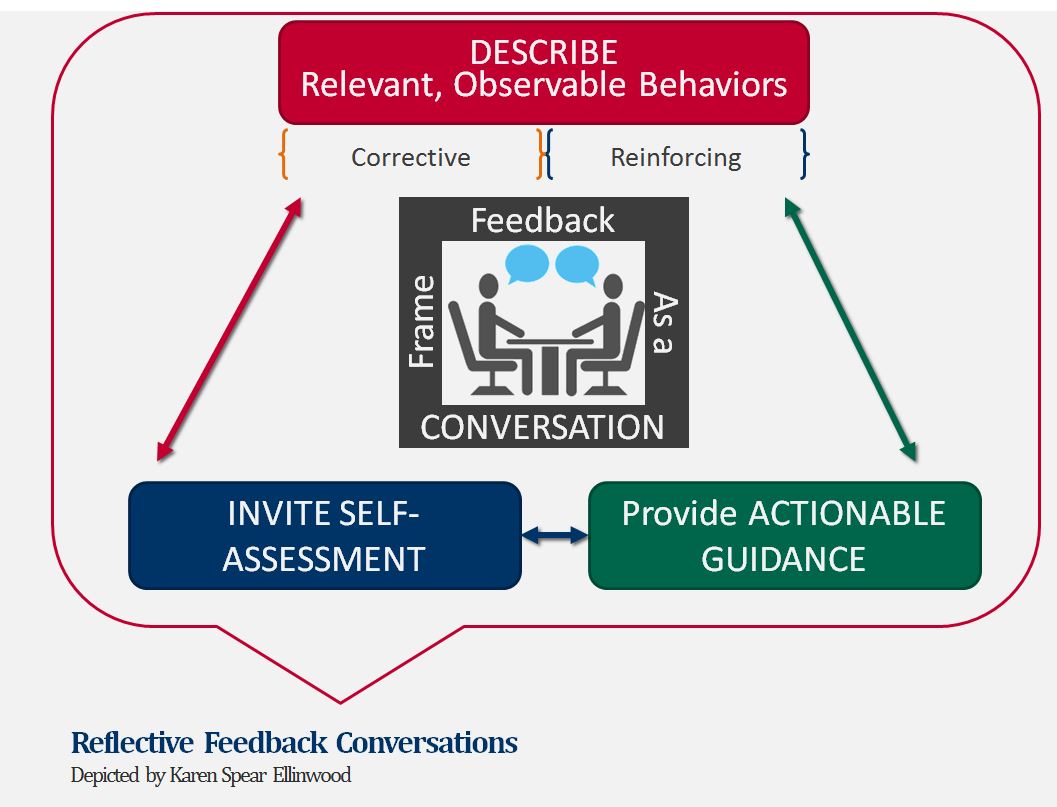The goal of feedback is to assist the learner in improving their knowledge, skills, attitudes or behaviors relevant to educational program objectives and goals.
To be effective, feedback should be constructive (helpful).
To be constructive, feedback must contain information upon which the learner can act to improve performance.
The feedback process, then, should offer the learner an opportunity to reflect on performance and the learning process. Reflection is critical to professional learning Schön's, 1983).
"Reflective feedback conversations" (Cantillon & Sargeant, 2008) offer a strategic approach for promoting the learner's critical reflection, self-assessment and a fact-based process to improvement.
The graphic (right) highlights the key components of this model, paraphrased below:
- Invite self-assessment
- Provide actionable guidance
- Describe relevant, observable behaviors to include constructive compliments and constructive correction.
Framing feedback as a conversation communicates to the learner that they are responsible for self-assessing and participating in a plan for improvement. Feedback, rather than being a one-way transmission, is a dialogue.
This model recommends that both constructive compliments and corrective comments are included in feedback. What makes complimentary and corrective comments constructive? A description of specific relevant, observable behaviors.
You will find more resources, teaching guides and presentations on reflective feedback conversations on this site.
Related Resources


